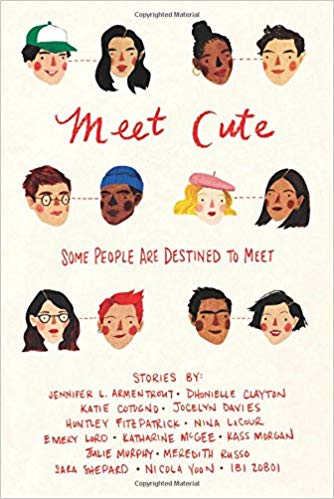 Meet Cute is a collection of “meet cute” (the first meeting of a couple who will be starring in a romance) stories by some big names in YA contemporary and romance right now. By their very nature, some of these feel a little incomplete—because these are the stories of the meet only, not the rest of the romance. There are fourteen of them and definitely some are better than others, in my view.
Meet Cute is a collection of “meet cute” (the first meeting of a couple who will be starring in a romance) stories by some big names in YA contemporary and romance right now. By their very nature, some of these feel a little incomplete—because these are the stories of the meet only, not the rest of the romance. There are fourteen of them and definitely some are better than others, in my view.
The first is “Siege Etiquette” by Katie Cotugno. This one’s told in second person (“you”), which is something that I don’t like. I mean, I don’t hate it, but it just feels forced and manipulative and a little pretentious. The story itself didn’t really speak to me, either. It’s about a girl who ends up in a bathroom with a boy she doesn’t know well at a party when the police are trying to get in and everyone else is hiding in the basement. The main character, Hailey, just isn’t too likable and I didn’t care that much about her. I liked the guy—Wolf—better and wondered why he seemed interested in her.
The second story, “Print Shop” by Nina LaCour, is actually my favorite. It’s about Evie, a girl who takes a job at an old-fashioned print shop because she values the non-digital approach. But then her first assignment is to get the shop an online presence, which I thought was pretty funny. Not that the story is very funny (it’s not), but I felt Evie’s pain, which is what you want. So then there’s a PR fiasco on the Twitter account she creates, all because of a “typo” made on a banner for a high school girl. After searching the girl’s profile, Evie jumps through hoops to help make sure she gets her remade banner in time, and when they finally meet, it is cute.
I enjoyed the third one, “Hourglass” by Ibi Zoboi, reasonably well even if it didn’t move me too much. It’s about Cherish, the only black teenager in her small town. She’s dress shopping with her white friend Stacy, who’s got the perfect body, unlike Cherish (who is giant—6’5” (wow)). And really, Cherish isn’t dress shopping herself—she’s with Stacy because the shop doesn’t have anything that will fit Cherish. For that reason, Cherish isn’t planning to go to the prom. But after she has a falling out with Stacy, she visits a new African tailor in town. That’s where she meets the tailor’s son, who looks like a superhero and is studying at the local community college. He’s nice.
The next story is “Click” by Katharine McGee. This one is about a an online dating date that goes horribly wrong—but in all the right ways. The online dating site is Web-data-driven, in that it scrapes the Web for all bits of info about anyone who signs up and does some clever matching on multiple points. She goes on her first date and manages to leave her phone in the taxi. This isn’t just normal bad because her phone contains a data chip with a very important program on it that she’s been working on. (Okay, let’s not talk about the fact that she wouldn’t have not had a backup somewhere, but okay, for the purposes of the story…) She and her date spend the evening chasing down the phone/chip.
“The Intern” by Sara Shephard is about Clara, an intern at a record company who gets a weird assignment with one of the company’s artists—take him to a psychic. I had a little trouble with this one because some of the events just didn’t feel entirely plausible.
The sixth story is “Somewhere That’s Green” by Meredith Russo. This one is about a trans girl whose community is up in arms since the school started letting her use the girls’ bathroom. I didn’t really love this one, either. The meet cute is between her and one of the spokespeople for the bathroom-use opponents, who despite having really religious parents likes girls. I just didn’t totally buy it all.
The next one is “The Way We Love Here” by Dhonielle Clayton, which features a brown girl and an Asian boy on a fictional island with magical undertones because everyone is born with several red strings around their ring fingers. The strings disappear over time until they’re all gone when you meet your true love. Vio isn’t particularly interested in meeting hers and when she rescues Sebastien from nearly drowning, they begin a time-traveling adventure of sorts. It’s kind of an odd story and I didn’t get really into it, but it wasn’t bad.
The eighth story is “Oomph” by Emery Lord. I liked this one quite a bit, too. It’s about two girls who meet at the airport and is full of clever and cute dialogue. I did feel like it took a little to get going, but once it did I really liked it.
The next story is “The Dictionary of You and Me” by Jennifer L. Armentrout. I’m sort of ambivalent about this one. I definitely liked the premise—a girl working at the library gets to know a boy while chasing down an overdue dictionary. It was just that the dialogue was a tad disappointing—decent though not as funny as it was trying to be. I also felt like the coincidence meter was sounding because of who the boy turns out to be.
“The Unlikely Likelihood of Falling in Love” by Jocelyn Davies is an interesting story. It’s definitely got a cute premise, even one aspect of it did bug me a little. It’s about a girl who’s the only girl in her AP stats class (and plans to win a Nobel Prize in math, as soon as they start offering one). She spots a boy on a train going the opposite direction in NYC and is instantly smitten. Then she proceeds to make calculating the likelihood of seeing him again her end-of-semester project for stats. This is what bugged me a little—I didn’t think that the only girl in a technical class would do such a “girly” topic. But then, maybe she would. We don’t get to know her too well in such a short story. Also, the way it’s written made it sound like the end result—whether or not she meets him again—matters to the class project. It doesn’t. The likelihood of something happening stays the same whether or not it actually comes to pass. But still, it was a pretty fun story.
I didn’t really care for “293 Million Miles” by Kass Morgan because I found it not very plausible, particularly the big reveal at the end. It’s about a guy and a girl trying out for a Mars mission. They end up in an isolated room together, ostensibly being tested for behavior under stress. I thought that her behavior would have totally ruled her out and the way they treated him at the end just didn’t work for me.
I’m not a fan of reality TV, so at first I thought I wouldn’t like “Something Real” by Julie Murphy. It’s set on the set of a reality TV show—one that pits two girls against each other in a competition to get a date with a famous young musician. So at first it’s not clear who the meet cute is between, but once we meet the musician himself, we can guess. It’s cute and there are several funny scenes.
“Say Everything” by Huntley Fitzpatrick is another second person story, which still bugs me, by the way. I didn’t love this one, either. A girl whose family used to be rich is waiting tables for some cash. A boy asks her out and it turns out that he’s not just any boy—he’s related to the reason her family isn’t rich anymore. He does her a weird favor that takes her back to when she was younger and makes her rethink her current situation.
The last story, “The Department of Dead Love” by Nicola Yoon, is really unique and creative. I liked it even if I didn’t love it. Thomas had what he thought was a perfect relationship that ended several months earlier and he’s gone through the various areas of the DoDL before finally landing in Autopsy (i.e. relationship autopsy). If he’s lucky, he’ll qualify for a Do Over. Things go unexpectedly and he doesn’t get what he wants out of his visit there, but ultimately gets something else.
Anyway, this was a long review. If you’re a fan of YA romance you might like this one.
 This short book first came out eighteen years ago but it’s still relevant today. It’s (fairly obviously) about a girl who cuts herself.
This short book first came out eighteen years ago but it’s still relevant today. It’s (fairly obviously) about a girl who cuts herself.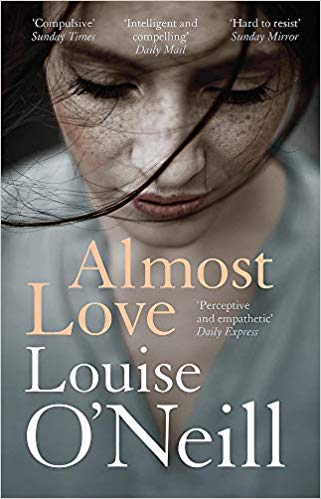 Although I generally review only YA books here, I’m making an exception this week. Not because it’s St. Patrick’s Day and this book is by an Irish writer, but because Louise O’Neill is one of my favorite authors even though she hasn’t written that many books—I’ve read her other three, all of which are YA (and all of which I’ve reviewed here). Almost Love is about a woman in her mid-twenties and almost has the feel of New Adult, but not quite.
Although I generally review only YA books here, I’m making an exception this week. Not because it’s St. Patrick’s Day and this book is by an Irish writer, but because Louise O’Neill is one of my favorite authors even though she hasn’t written that many books—I’ve read her other three, all of which are YA (and all of which I’ve reviewed here). Almost Love is about a woman in her mid-twenties and almost has the feel of New Adult, but not quite.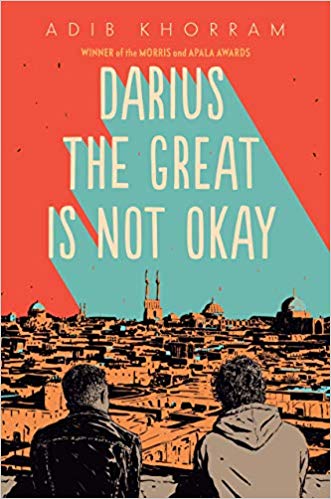 Darius the Great Is Not Okay is a unique book. Darius is an American kid whose mother is from Iran and whose father is Teutonic stock, and he is under treatment for depression. You don’t see a lot of YA featuring boys of color with depression, so I was curious to see how this one would play out. Also, most of the book is set in Iran, which is cool—I’ve only personally encountered one other YA book set there (not that I’ve looked extensively, but still).
Darius the Great Is Not Okay is a unique book. Darius is an American kid whose mother is from Iran and whose father is Teutonic stock, and he is under treatment for depression. You don’t see a lot of YA featuring boys of color with depression, so I was curious to see how this one would play out. Also, most of the book is set in Iran, which is cool—I’ve only personally encountered one other YA book set there (not that I’ve looked extensively, but still).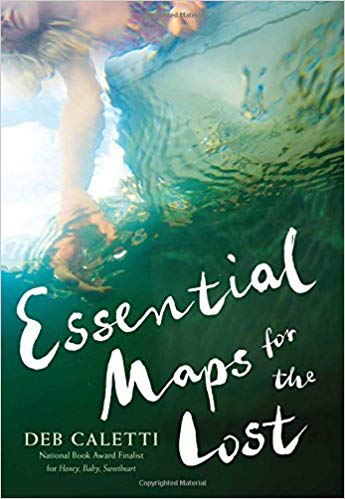 I’ve read a couple other books by Deb Caletti and liked them both. One thing I noticed is that the two I read (Stay and The Nature of Jade) were different from each other. So I didn’t know what to expect when I picked up Essential Maps for the Lost. I heard Caletti speak about this book with E. Lockhart last year at a library event so I knew it had something to do with mental illness, like both of the others I read. But the interesting thing is that I found this book very different from the other two. It felt more more literary, for one (not that the other two weren’t but this one seemed more so)—maybe even a little ethereal. I read it for my MFA so I had to study it after my first read through. On my first read, I actually found myself a little confused because there were a lot of characters and we were really deep in both of the main characters’ heads. But as I read through it a second time, everything seemed obvious and clear, so perhaps I just wasn’t paying full attention the first time I read it. Who knows.
I’ve read a couple other books by Deb Caletti and liked them both. One thing I noticed is that the two I read (Stay and The Nature of Jade) were different from each other. So I didn’t know what to expect when I picked up Essential Maps for the Lost. I heard Caletti speak about this book with E. Lockhart last year at a library event so I knew it had something to do with mental illness, like both of the others I read. But the interesting thing is that I found this book very different from the other two. It felt more more literary, for one (not that the other two weren’t but this one seemed more so)—maybe even a little ethereal. I read it for my MFA so I had to study it after my first read through. On my first read, I actually found myself a little confused because there were a lot of characters and we were really deep in both of the main characters’ heads. But as I read through it a second time, everything seemed obvious and clear, so perhaps I just wasn’t paying full attention the first time I read it. Who knows. I am still studying short stories for the MFA, and this was one of the few YA collections I’ve been able to find. So I wasn’t expecting too much—but it turns out the book is pretty awesome. I really liked several of the stories. A few were a little on the bland side, but there was only one that I didn’t care for. None of this should come as a big surprise given the names of the authors in this collection. Though the book’s 9 years old so it predates some of their biggest stardom (John Green, Cassandra Clare, and Holly Black especially).
I am still studying short stories for the MFA, and this was one of the few YA collections I’ve been able to find. So I wasn’t expecting too much—but it turns out the book is pretty awesome. I really liked several of the stories. A few were a little on the bland side, but there was only one that I didn’t care for. None of this should come as a big surprise given the names of the authors in this collection. Though the book’s 9 years old so it predates some of their biggest stardom (John Green, Cassandra Clare, and Holly Black especially).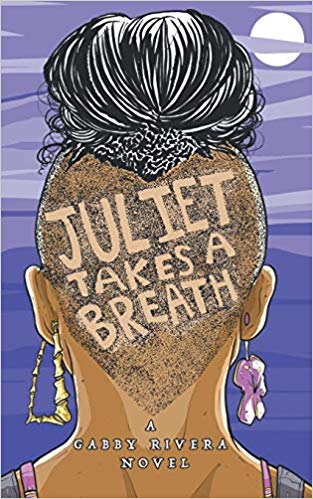 Juliet Takes a
Juliet Takes a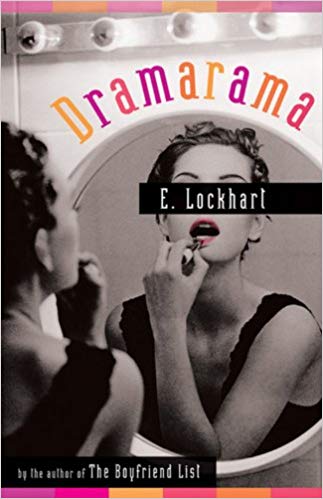 First, I have to say that Dramarama plays heavily with stereotypes—namely Gay Best Friend and Theatre Geek. However, it’s not a bad thing at all because Lockhart brings both to life so effectively.
First, I have to say that Dramarama plays heavily with stereotypes—namely Gay Best Friend and Theatre Geek. However, it’s not a bad thing at all because Lockhart brings both to life so effectively.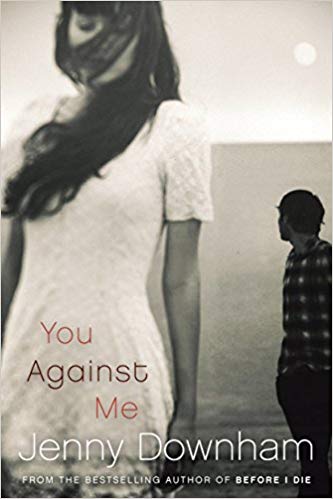 I like Downham but was a little hesitant about this one because I thought the premise sounded stressful. But I’d put it on my reading list for this MFA semester, so I cracked it open last week.
I like Downham but was a little hesitant about this one because I thought the premise sounded stressful. But I’d put it on my reading list for this MFA semester, so I cracked it open last week. Girl Mans Up is one of the best books I’ve read in a while. This is the first gender nonconforming girl I’ve really seen in a book (I’m sure there are others, but I haven’t encountered them) and I was really excited to read Pen’s story. It reminded me in some ways of what I’m trying to do with my own book Ugly, even though Pen is different in a lot of significant ways from my protagonist.
Girl Mans Up is one of the best books I’ve read in a while. This is the first gender nonconforming girl I’ve really seen in a book (I’m sure there are others, but I haven’t encountered them) and I was really excited to read Pen’s story. It reminded me in some ways of what I’m trying to do with my own book Ugly, even though Pen is different in a lot of significant ways from my protagonist. Meet Cute is a collection of “meet cute” (the first meeting of a couple who will be starring in a romance) stories by some big names in YA contemporary and romance right now. By their very nature, some of these feel a little incomplete—because these are the stories of the meet only, not the rest of the romance. There are fourteen of them and definitely some are better than others, in my view.
Meet Cute is a collection of “meet cute” (the first meeting of a couple who will be starring in a romance) stories by some big names in YA contemporary and romance right now. By their very nature, some of these feel a little incomplete—because these are the stories of the meet only, not the rest of the romance. There are fourteen of them and definitely some are better than others, in my view.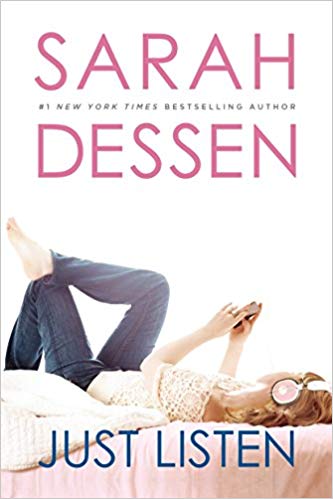 I first read Just Listen a few years ago and I loved it, mostly for Owen, the male lead. Not because he was swoonworthy or whatever in the typical sense. No, it was because he was hilarious (as was his sister and his relationship with her). Also, I could relate to him and his frustrations with Annabel (I had the same frustrations). I recently reread the novel for my MFA and found it just as good as I remembered. I was still frustrated with Annabel and glad to see her change by the end, and I was still very fond of Owen and his anger management issues (doesn’t sound particularly funny, but it’s all in the way he and his sister talk about it).
I first read Just Listen a few years ago and I loved it, mostly for Owen, the male lead. Not because he was swoonworthy or whatever in the typical sense. No, it was because he was hilarious (as was his sister and his relationship with her). Also, I could relate to him and his frustrations with Annabel (I had the same frustrations). I recently reread the novel for my MFA and found it just as good as I remembered. I was still frustrated with Annabel and glad to see her change by the end, and I was still very fond of Owen and his anger management issues (doesn’t sound particularly funny, but it’s all in the way he and his sister talk about it).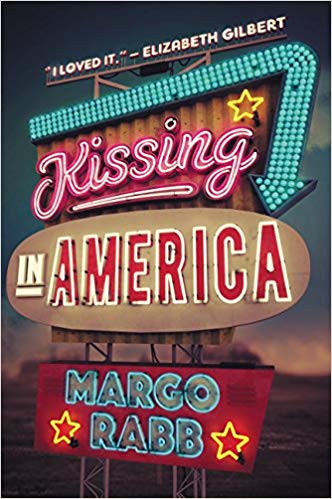 It’s not often that you get a YA novel that deals with both poetry and romance novels. Rabb does a great job with this book. It’s cute and funny even while touching on some sad subjects.
It’s not often that you get a YA novel that deals with both poetry and romance novels. Rabb does a great job with this book. It’s cute and funny even while touching on some sad subjects.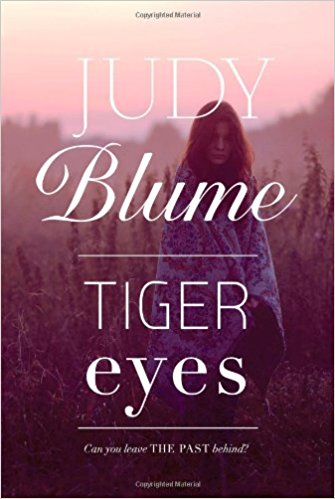 As I think I’ve mentioned earlier, I wasn’t a huge Judy Blume fan growing up, although I did read most of her stuff for younger readers. My MFA course instructor wanted me to read several of Blume’s books for this semester and Tiger Eyes was one I picked. It was first published in 1981 and I have to say it holds the test of time pretty well, with a couple exceptions I’ll mention below.
As I think I’ve mentioned earlier, I wasn’t a huge Judy Blume fan growing up, although I did read most of her stuff for younger readers. My MFA course instructor wanted me to read several of Blume’s books for this semester and Tiger Eyes was one I picked. It was first published in 1981 and I have to say it holds the test of time pretty well, with a couple exceptions I’ll mention below.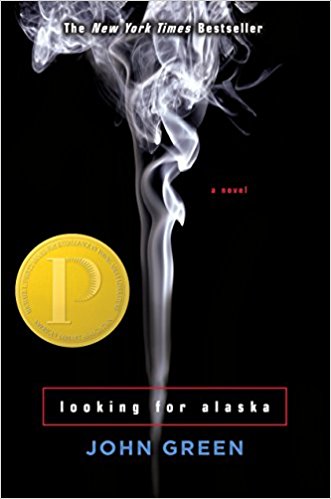 I first read Looking for Alaska two or three years ago, and reread it recently for the MFA. I enjoyed it the second time around, too. Of course, I was “reading as a writer” so the experience was a little different. Still, it’s a good story told well.
I first read Looking for Alaska two or three years ago, and reread it recently for the MFA. I enjoyed it the second time around, too. Of course, I was “reading as a writer” so the experience was a little different. Still, it’s a good story told well.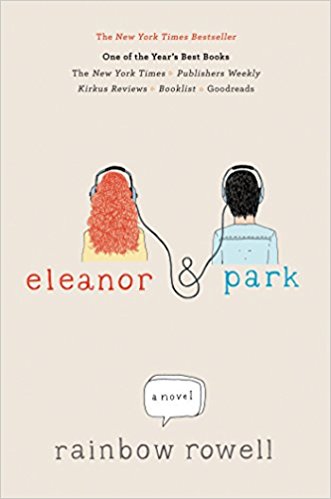 Eleanor & Park is one of my favorite books because it’s a wonderful emotional roller coaster-ride. Rowell is probably my favorite author because of what she can do with details. Who knew hand-holding could be as intense as she makes it?
Eleanor & Park is one of my favorite books because it’s a wonderful emotional roller coaster-ride. Rowell is probably my favorite author because of what she can do with details. Who knew hand-holding could be as intense as she makes it?